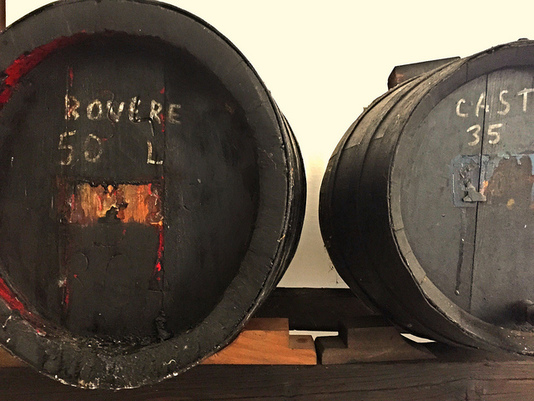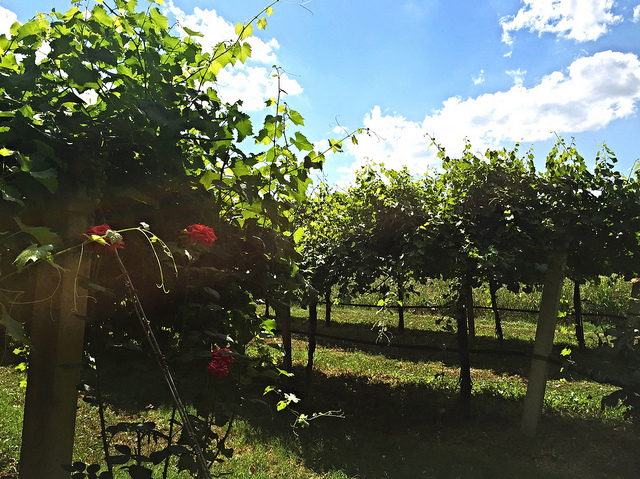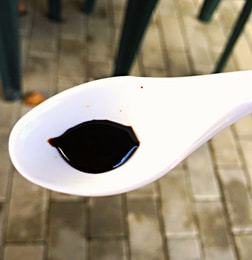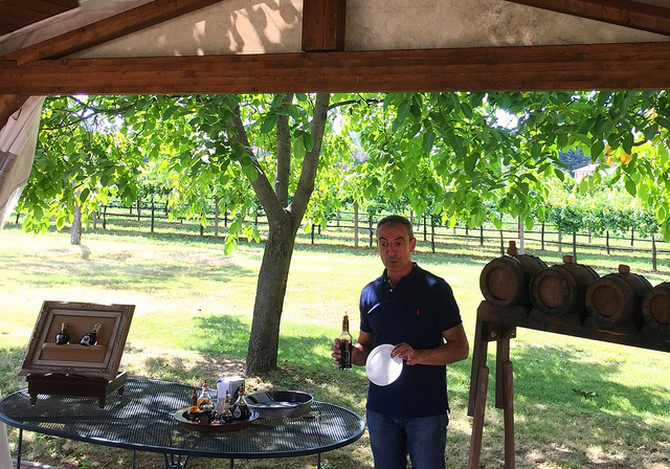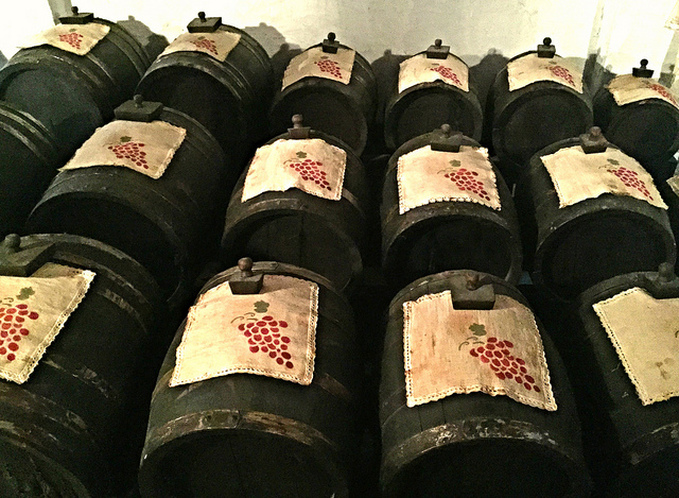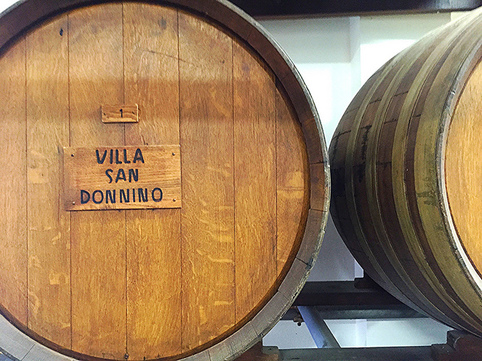Villa San Donnino, Traditional Balsamic Vinegar of Modena
Traditional Balsamic Vinegar is DOP (Denominazione di Origine Protetta), which translates to Protected Designation of Origin, a way for consumers to quickly recognize Italian products that are produced by local purveyors using traditional methods. In this case, the black gold is produced in Modena and only contains one ingredient: grape juice (whereas the balsamic found on supermarket shelves is often cut with wine vinegar and additives for color). It’s also aged for a minimum of twelve years, whereas most vinegar is aged for 2 years, maximum. The result lives up to it’s nickname, a thick, rich black liquid that is so complex and delicious, it puts the supermarket stuff to shame.
|
Waiting 12 years to finish aging the first batch means Traditional Balsamic Vinegar production isn't exactly a start-up business. Davide Lonardi was born into vinegar production, with his family's operation at Villa San Donnino now in its third generation, they utilize wooden barrels that date back to the 19th century. Considered to be of medium size in Modena, Davide produces 3,500 bottles of Traditional Balsamic Vinegar per year. In the area, there are many small batch producers who yield as little as 100 bottles, and just a few larger ones that produce up to 5,000 bottles per year.
Over a half century of making balsamic vinegar on this property means the quality of the family product is of the utmost importance. Each year, Davide and his team harvest the grapes, which are skinned and pressed into juice that is immediately cooked to stop the initial fermentation. The cooked juice, or must, is placed into large wooden barrels in the Villa San Donnino attic, or batteria. |
|
A method of decanting is used to move a small amount of the must from the larger barrels to the smaller ones each year. This process takes place each winter, as summer is reserved for the fermentation process which occurs naturally in warm weather. After either 12 or 24 years have passed, the smallest barrel is emptied and taken to the Consortium of Producers of the Traditional Balsamic Vinegar of Modena. Here, the product is reviewed by master tasters (the sommeliers of vinegar), and if approved, bottled into 100ml bottles. Only then can Davide add the Villa San Donnino label and sell the product. This rigorous process and incredibly high quality may be why each bottle sells for a minimum of 40 euros. It’s also likely why Davide hasn't had a vacation since 1995.
While tradition dictates the process for Traditional Balsamic Vinegar production, Davide has taken some creative liberties by introducing a hybrid 6-year aged product called Nerone.
While tradition dictates the process for Traditional Balsamic Vinegar production, Davide has taken some creative liberties by introducing a hybrid 6-year aged product called Nerone.
|
Although not considered the DOP Traditional Balsamic Vinegar of Modena, this less expensive alternative is still leaps and bounds beyond supermarket vinegar when it comes to flavor and quality. He also crafted a 6-year aged white vinegar (appeals to the French, evidently) and experimented with different types of wood barrels, each offering different undertones in flavor. Essentially, he’s a modern day artisanal innovator. |
In a country like Italy, where history and tradition drive food production, and in a region like Emilia-Romagna that yields some of the world’s most delicious food products, Traditional Balsamic Vinegar continues to be crafted with the same technique as hundreds of years ago. This translates to an incredibly unique and highly sustainable product that stands out in a world which revolves around big box stores and fast food restaurants. The time, energy and effort required to make Traditional Balsamic Vinegar is a reminder that thoughtful, slow, and careful is almost always better.
- To learn more about Villa San Donnino, visit http://www.villasandonnino.it/
- If you're in Modena, schedule a visit to meet Davide and taste Traditional Balsamic Vinegar. Email [email protected]
- Be smart when balsamic vinegar shopping. Look for age (the longer the better), and ingredients (it should only be made with grapes). Seek out Traditional Balsamic Vinegar of Modena - it is always in a 100ml bottle. Well worth the high price!

